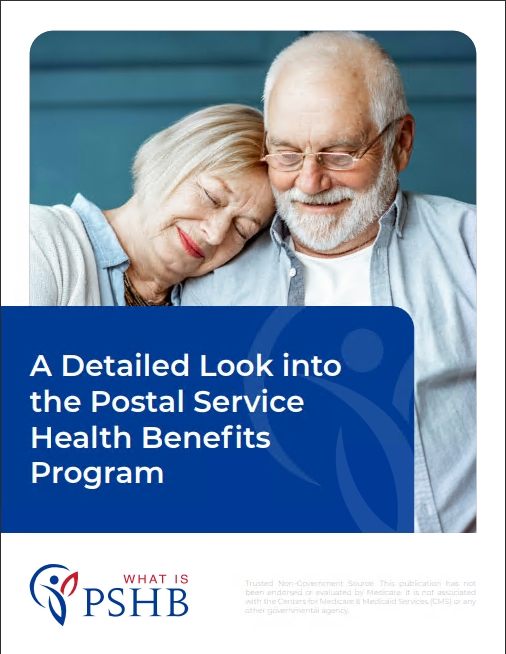Key Takeaways
-
Medicare Part C, or Medicare Advantage, can enhance your Postal Service Health Benefits (PSHB) plan by combining comprehensive healthcare coverage with added benefits.
-
Understanding the integration of Medicare Advantage with PSHB helps you make informed choices, especially if you’re already eligible for Medicare.
Why Consider Medicare Advantage with Your PSHB Plan?
As a participant in the Postal Service Health Benefits (PSHB) program, you already have access to a robust health insurance plan. But once you become eligible for Medicare, you might wonder how to maximize your coverage. This is where Medicare Part C, or Medicare Advantage, enters the picture. By combining your PSHB benefits with Medicare Advantage, you can create a more comprehensive and potentially cost-effective healthcare package.
Let’s explore why Medicare Advantage plans could align well with your PSHB plan and how this pairing works in practice.
What Is Medicare Advantage?
Medicare Advantage, also known as Part C, is an all-in-one alternative to Original Medicare. Offered by private insurers approved by Medicare, these plans bundle Medicare Part A (hospital insurance) and Part B (medical insurance). Many also include Part D (prescription drug coverage) and extra benefits like dental, vision, and hearing.
Since Medicare Advantage plans are regulated by Medicare, they must offer at least the same level of coverage as Original Medicare. However, most go beyond that, providing additional services that enhance your healthcare experience.
The Basics of PSHB and Medicare Integration
As a PSHB enrollee, your plan’s structure changes once you’re eligible for Medicare. Here’s how the integration works:
-
Primary and Secondary Payers: When you enroll in Medicare, it typically becomes your primary payer, with your PSHB plan acting as secondary coverage. This coordination often reduces your out-of-pocket costs.
-
Medicare Part B Enrollment: Enrolling in Medicare Part B is a requirement for most Medicare-eligible Postal Service retirees to maintain PSHB coverage. This ensures smoother integration and avoids gaps in care.
-
Cost-Sharing Benefits: Some PSHB plans waive or reduce deductibles and copayments for enrollees who have Medicare as their primary coverage.
Understanding these basics sets the stage for seeing how Medicare Advantage plans can fit into the equation.
Why Medicare Advantage Plans Might Be a Good Fit
Medicare Advantage plans offer unique features that make them appealing for those in the PSHB program. Here are several reasons why they might be worth considering:
1. Comprehensive Coverage
Unlike Original Medicare, which doesn’t cover services like dental or vision care, many Medicare Advantage plans include these extras. If your PSHB plan offers limited coverage for such services, Medicare Advantage can fill in the gaps.
2. Prescription Drug Coverage
Most Medicare Advantage plans include Part D prescription drug coverage. This can complement your PSHB plan’s pharmacy benefits, reducing your overall medication expenses.
3. Cost Management
Medicare Advantage plans feature out-of-pocket maximums, which limit your annual spending on covered healthcare services. Pairing this with your PSHB plan’s secondary coverage may result in fewer financial surprises throughout the year.
4. Convenience
With Medicare Advantage, you’re combining Medicare Parts A, B, and D, and potentially additional services, into a single plan. This simplifies healthcare management, as you’ll deal with fewer plans and providers.
5. Tailored Benefits
Many Medicare Advantage plans include wellness programs, fitness memberships, and other services not typically found in PSHB plans. These extras promote a healthier lifestyle and can lead to long-term savings.
Things to Keep in Mind
While Medicare Advantage offers many benefits, it’s important to consider the following when pairing it with your PSHB plan:
1. Plan Networks
Medicare Advantage plans often have network restrictions, such as requiring you to see in-network providers for lower costs. If you prefer seeing a wider range of doctors, check how this aligns with your PSHB plan’s flexibility.
2. Additional Costs
Although Medicare Advantage plans offer cost-saving potential, you’ll still need to budget for Medicare Part B premiums. Ensure you’re comfortable with the combined cost of premiums and any out-of-pocket expenses.
3. Eligibility Requirements
Not everyone is immediately eligible for Medicare Advantage. You must first enroll in Medicare Parts A and B to access Part C.
4. Regional Variability
Medicare Advantage plan options and coverage vary by location. Take the time to review plans available in your area to ensure they meet your needs.
How to Choose the Right Medicare Advantage Plan
Selecting a Medicare Advantage plan requires careful consideration of your healthcare needs and financial situation. Here’s a step-by-step approach:
1. Assess Your Healthcare Needs
Start by evaluating the types of care you’ll likely need. Are you managing chronic conditions? Do you require frequent specialist visits? Understanding your health priorities helps narrow down plan options.
2. Compare Coverage Options
Look for Medicare Advantage plans that align well with your PSHB benefits. For example, if your PSHB plan has limited dental coverage, consider a Medicare Advantage plan with robust dental benefits.
3. Examine Cost Structures
Pay attention to premiums, deductibles, copayments, and out-of-pocket maximums. Factor in the Medicare Part B premium when calculating your total healthcare costs.
4. Review Provider Networks
If you have preferred doctors or specialists, make sure they’re included in the Medicare Advantage plan’s network. Otherwise, you may face higher costs or need to switch providers.
5. Evaluate Prescription Drug Coverage
Check the formulary of each Medicare Advantage plan to ensure it covers your medications. Compare this against the prescription drug benefits offered by your PSHB plan.
6. Consider Supplemental Benefits
Extra benefits like fitness programs or transportation services can make a plan more appealing. Weigh these perks against your healthcare priorities.
When to Make the Switch
Timing is crucial when integrating Medicare Advantage with your PSHB plan. Here’s what you need to know:
Enrollment Periods
You can enroll in a Medicare Advantage plan during the following periods:
-
Initial Enrollment Period (IEP): A 7-month window around your 65th birthday.
-
Medicare Open Enrollment Period: October 15 to December 7 each year.
-
Medicare Advantage Open Enrollment Period: January 1 to March 31, exclusively for switching plans or returning to Original Medicare.
Life Events
Special Enrollment Periods (SEPs) allow changes outside standard enrollment periods if you experience qualifying life events, such as moving or losing other coverage.
Your Next Steps
Pairing Medicare Advantage with your PSHB plan is a strategic way to optimize your healthcare coverage. By understanding how these plans complement each other, you can make informed decisions that suit your needs and budget. Take the time to research your options, review plan details, and evaluate how this integration supports your long-term health goals.
Building a Stronger Healthcare Strategy
Integrating Medicare Advantage into your PSHB plan offers enhanced coverage, cost-saving opportunities, and added convenience. As you explore this option, focus on your healthcare priorities, and remember to review plan specifics during enrollment periods. A well-coordinated approach ensures you’re fully prepared to make the most of your benefits.










